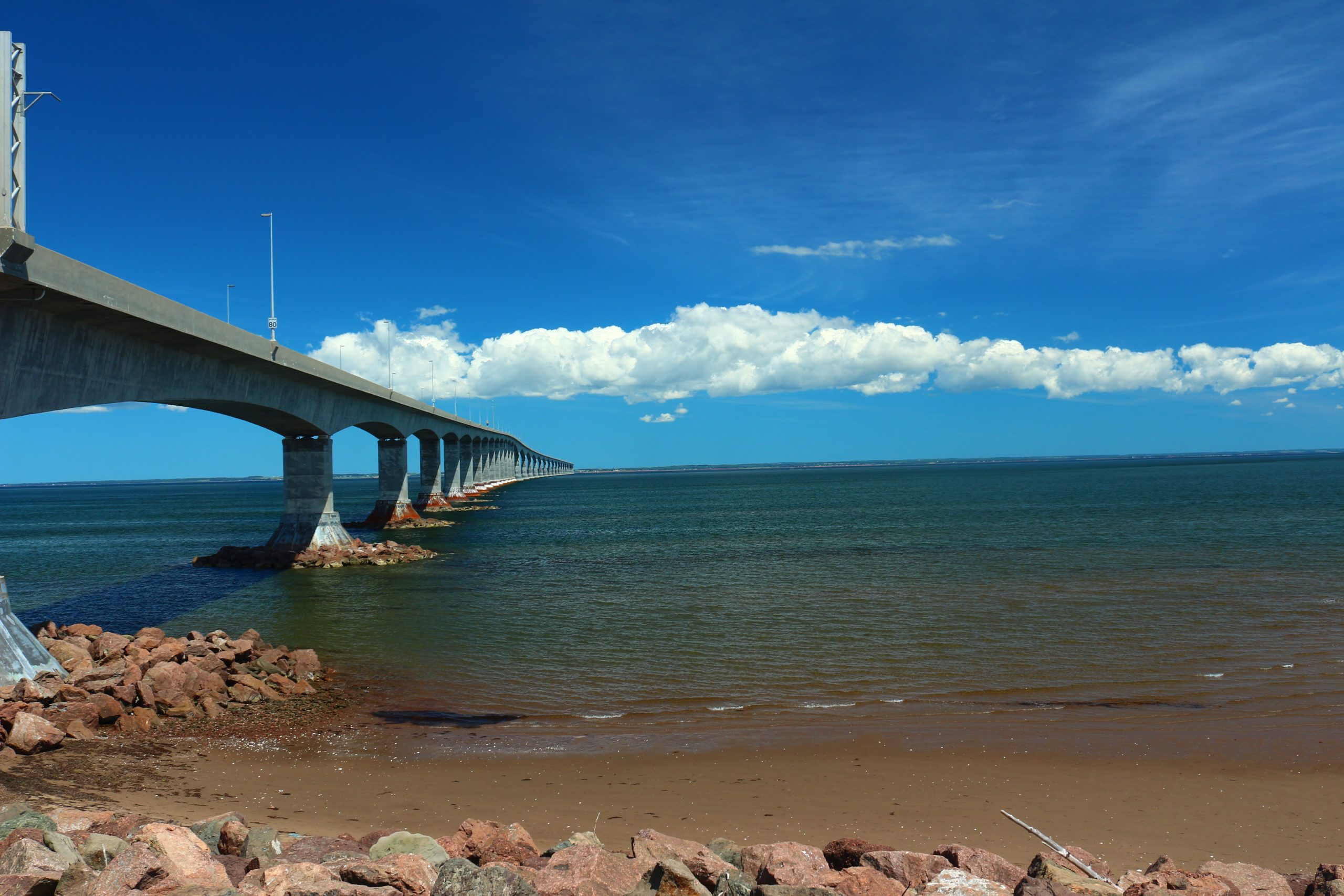Confederation Bridge, New Brunswick/Prince Edward Island

The Confederation Bridge, spanning the Northumberland Strait, connects the provinces of New Brunswick and Prince Edward Island in Canada. It is a marvel of engineering and a vital link between the two provinces. In this article, we will explore the history, design, and significance of this incredible bridge.
Before the Confederation Bridge, the only way to reach Prince Edward Island was by ferry, which was both time-consuming and unreliable. In 1988, the federal government and the two provincial governments signed an agreement to build a bridge between New Brunswick and Prince Edward Island. Construction began in 1993 and was completed in 1997, making the bridge one of the world’s largest bridges over ice-covered water.
The Confederation Bridge is an engineering marvel. It spans 12.9 kilometers (8 miles) across the Northumberland Strait, making it the longest bridge in Canada and the world’s longest bridge over ice-covered water. The bridge’s design is unique, consisting of 65 concrete piers that support 44 main spans and two approach spans. The concrete piers are anchored to the seabed, and each main span is 250 meters (820 feet) long. The bridge’s height is also impressive, with a clearance of 40 meters (131 feet) above the waterline to allow large ships to pass underneath.
The Confederation Bridge has had a significant impact on the economic development of Prince Edward Island. Before the bridge, the island’s economy was mainly based on agriculture and fishing, with tourism being limited to the summer months. The bridge has opened up year-round tourism, and the island’s economy has diversified to include other industries, such as technology and healthcare.
The bridge has also had a positive impact on the environment. Before the bridge, the ferries that transported people and goods to Prince Edward Island emitted significant amounts of greenhouse gases. The bridge has eliminated the need for ferries, resulting in a reduction of greenhouse gas emissions.
Finally, the bridge has become a symbol of national unity. The name “Confederation Bridge” refers to the Confederation of Canada, which brought together the original four provinces of Ontario, Quebec, Nova Scotia, and New Brunswick in 1867. The bridge connects two provinces and serves as a reminder of the importance of unity in the country.
The Confederation Bridge is an engineering marvel, connecting the provinces of New Brunswick and Prince Edward Island and improving the island’s economy and the environment. It is also a symbol of national unity and a testament to the incredible work of the engineers and workers who built it. The bridge has become an iconic landmark in Canada and is a must-visit destination for anyone traveling to the Maritimes.